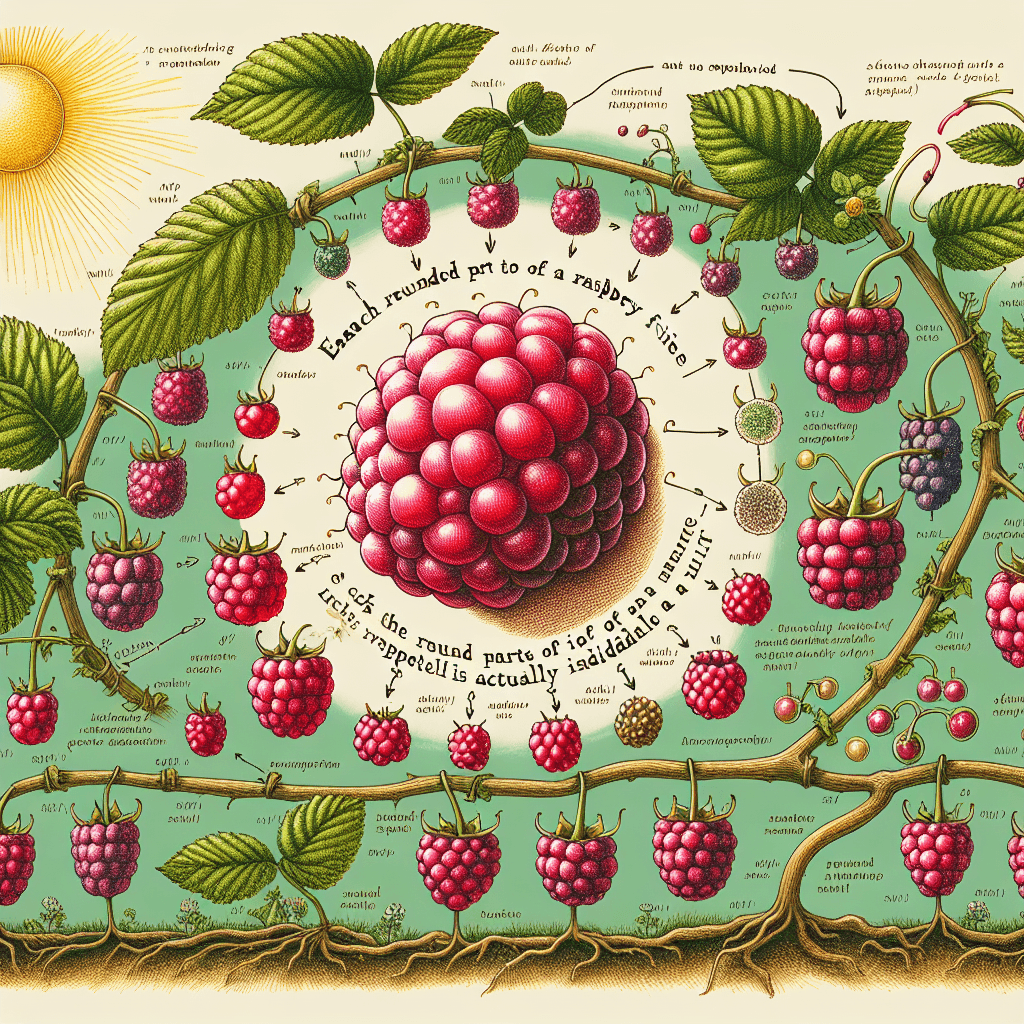Why is a raspberry actually a cluster of hundreds of tiny individual fruits
That single raspberry in your hand is a delicious illusion; you're actually holding a tightly-packed cluster of up to 100 individual fruits, each with its own story to tell.


Too Long; Didn't Read
TLDR: A raspberry is an aggregate fruit. Each tiny bubble is a separate, individual fruitlet that grew from one of the many ovaries within a single flower, all clustered together on a central core.
Berry Deceiving: Why a Raspberry is Actually a Cluster of Hundreds of Tiny Individual Fruits
Have you ever paused to look closely at a raspberry before popping it into your mouth? You’ve likely noticed its unique, bumpy texture, a delicate mosaic of tiny, glistening globes. We call it a "berry," but have you ever wondered what those little bumps are? The answer is far more fascinating than you might think. That single raspberry you’re holding is not one fruit at all; botanically speaking, it’s a sophisticated cluster of hundreds of individual fruits working in perfect harmony.
This post will peel back the layers of this common fruit to reveal its surprising botanical identity. We will explore what makes a fruit a "true berry," uncover the unique floral anatomy that leads to the raspberry's structure, and explain why it’s more accurately known as an "aggregate fruit."
The Berry Misconception: What Defines a "True Berry"?
In the world of botany, the word "berry" has a very specific definition that often clashes with our culinary vocabulary. To be a true berry, a fruit must develop from a single flower that contains one single ovary. This ovary then ripens into a fleshy fruit with its seeds embedded inside.
Surprisingly, many of the fruits we call berries don't fit this description. By this strict definition:
- Grapes, tomatoes, blueberries, and even avocados are all true berries.
- Strawberries, blackberries, and, of course, raspberries are not.
This botanical plot twist begs the question: if a raspberry isn't a berry, what is it? The answer lies in the flower from which it grows.
From a Single Flower, Many Fruits Grow
The secret to the raspberry’s structure begins with its flower. While a blueberry flower has a single pistil (the female reproductive organ) containing a single ovary, a raspberry flower is different. It has one flower, but that flower contains dozens, sometimes hundreds, of tiny individual pistils, each with its own ovary.
When bees and other pollinators visit the flower, they pollinate many of these pistils simultaneously. Following successful pollination, a remarkable transformation occurs. Instead of one large ovary swelling to become a single fruit, each tiny, individual ovary begins to develop into its own miniature fruit.
Meet the Aggregate Fruit: The Raspberry's True Identity
This unique developmental process is what classifies the raspberry as an aggregate fruit. An aggregate fruit is defined as one that develops from a single flower with numerous separate ovaries.
Each of those tiny, bead-like globes that make up the raspberry is a complete, self-contained fruit called a drupelet. Think of a drupelet as a miniature version of a peach or a plum; it has a fleshy outer layer and a tiny, hard pit in the center that contains a single seed.
These hundreds of individual drupelets are all attached to a central core known as the receptacle. When you pick a ripe raspberry, the cluster of drupelets pulls away cleanly, leaving the pale, cone-shaped receptacle behind on the plant. This is what creates the characteristic hollow center of a raspberry.
A Quick Comparison: Raspberries vs. Blackberries
To better understand this, we can compare a raspberry to its close relative, the blackberry. Blackberries are also aggregate fruits formed from hundreds of drupelets. However, there's one key difference. When you pick a blackberry, the receptacle breaks off with the fruit and is eaten as part of it. This is why blackberries have a solid, slightly tougher core, whereas raspberries are hollow.
Conclusion
So, the next time you enjoy a handful of fresh raspberries, take a moment to appreciate their incredible complexity. You are not eating a single fruit, but a beautifully arranged collection of hundreds of individual drupelets, each one a perfect fruit in its own right. This botanical distinction does more than just satisfy a trivia question; it offers a glimpse into the immense diversity and ingenuity of the plant world. It’s a wonderful reminder that even in the most familiar foods, there are amazing scientific stories waiting to be discovered.
More Articles

Why do movie punches sound so much crunchier and louder than real ones?
That sickening, bone-crunching punch you hear in the movies is a lie, and the secret ingredient is probably sitting in your refrigerator right now.

What makes a beer bottle suddenly foam over just from a light tap on top?
It’s not magic, it’s a shockwave; discover the explosive physics that turns a gentle tap on your beer bottle into an instant foamy geyser.

Why do police officers touch the back of a car during a traffic stop?
It’s not a random habit; that simple touch is a calculated, old-school tactic designed to leave a crucial and potentially life-saving piece of evidence behind.